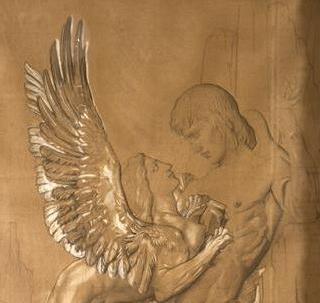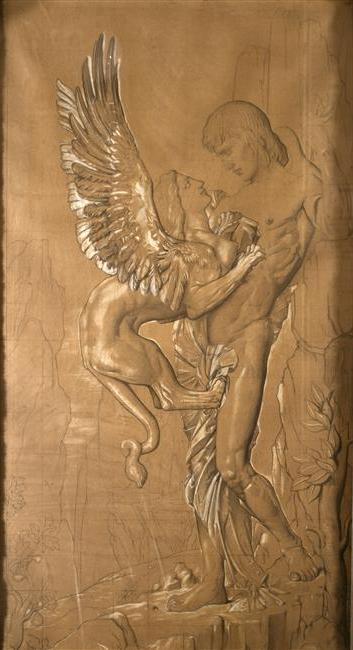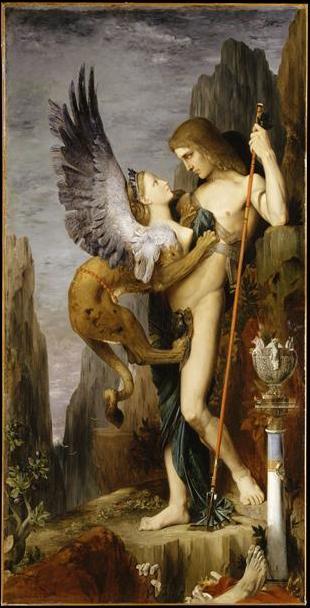Choix d'œuvres
Œdipus and the Sphinx [Œdipe et le Sphinx]
“There was a clap of thunder inside the Palais de l’Industrie”. This was how the Journal du Loiret, described Oedipus and the Sphinx (New York, Metropolitan Museum of Art), Gustave Moreau’s submission to the Salon in 1864. Praised by critics as eminent as Théophile Gautier, Maxime du Camp, Paul de Saint-Victor, Jules-Antoine Castagnary (who was, however, an ardent champion of Naturalism); caricatured by Daumier, Cham and Alfred Grévin, this work greatly advanced the reputation of the man who aspired to renew history painting, to: “produce epic art that is not Academic”. It was bought by an illustrious collector, Prince Napoleon. This large cartoon, in charcoal and white chalk, squared up, is one stage in its realisation but differs from the final version. So, although the proportions of Oedipus – son of Jocasta and Laios, King of Thebes – and the Sphinx are identical, a number of details have been omitted: the spear held by the hero (whose shadow, however, can be made out on his left biceps), the birds flying off into the rocky gorge, the column bearing an antique vase, and the snake rising up at the base of the column and threatening a butterfly. Several anatomical fragments are also missing, a macabre reminder of the monster’s victims added to the foreground, as in Ingres’ painting for the 1827 Salon, Oedipus explains the Mystery of the Sphinx (Paris, Musée du Louvre, R.F. 218), with which it was inevitably compared. Moreau here presents us with a new vision of the classical myth. This confrontation from which Oedipus will emerge as victor – the laurel branches at his feet and in his hand foretell this – is the confrontation of good and evil, of the spirit and physical forces, between the two sexes. As for this riddle, as Ernest Chesneau suggests: “is this not the very enigma of woman herself?”

![Œdipus and the Sphinx [Œdipe et le Sphinx]](/sites/moreau/files/2020-11/Cat.13%20D%C3%A9tail%20Oedipe%20et%20le%20Sphinx.jpg)
![Œdipus and the Sphinx [Œdipe et le Sphinx]](/sites/moreau/files/2020-11/Cat.13%20Oedipe%20et%20le%20Sphinx.jpg)
![Œdipus and the Sphinx [Œdipe et le Sphinx]](/sites/moreau/files/2020-11/21.134.1%20Oedipe%20et%20le%20Sphinx.jpg)


